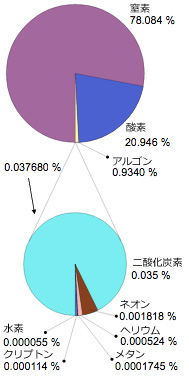This film presents a world supposed to be realized if the shape of the Earth would be cubic. You will find that a drastic change of environment is introduced under this assumption. Recognizing this change, you will get a better understanding on the real Earth environment, i.e., you will find that the real Earth environment is designed incredibly favorable for living beings including us.
The cubic Earth investigated in this project
The cubic Earth is a product of imagination. Therefore, we need to apply various parameters for the cubic Earth before investigating characteristics of the environment. The parameters we have selected are as follows:
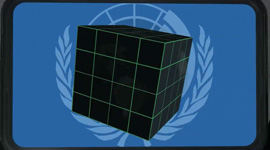
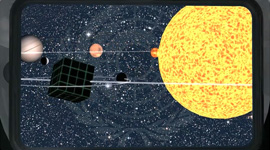
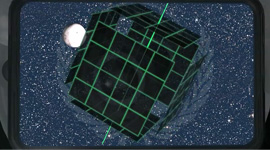
1. The length of a side of the cube is 10,000km. The material inside of the cubic Earth is basically the same with that of the real Earth.
cf. It is quite doubtful that the cubic planet can exist in the space, keeping the shape stably. It would be quite possible for a cubic planet to collapse by its self-gravity. We assume that the shape of the cube is maintained in our planet by an unknown reason.
2. The distance between the sun and the cubic Earth is same with that in the real solar system(150,000,000km). The period of the rotation of the Earth around the Sun is 365days and the period of the spinning of the Earth around its axis is 24hours (exactly speaking, 23hours 56minutes). The axis makes an angle of 23.4degrees from the normal of the orbital plane.
3. The rotating axis of the Earth is a line connecting between the center of the cube and a center of a surface (square). We call the side with the rotating axis "polar plane" and the side without the rotating axis "side plane" (cf. the figure).
4. The amount of the atmosphere which covers the cubic Earth is the same with that of the real Earth. Six sides of the cube share the same amount of the atmosphere. The composition of the atmosphere on the cubic Earth is same with that of the real Earth.
5. The amount of the oceanic water of the cubic Earth is the same with that of the real Earth. The ocean appears to only one side plane.
We have investigated what kind of the atmosphere-ocean system occurs on the cubic Earth under the above assumptions based on physical rules. However, the film contains a few elements which are not based on the physical rules because of the technical reasons.
In the following we explain scientific characteristics for the air temperature, atmospheric pressure and so on, on the cubic Earth.
[Materials in the interior of the Earth]
Fig. 1 shows the structure of the interior of the Earth. It consists of a crust and a mantle, both made by rocks, and a core made by metals. The elements contained in the crust are silicon, aluminum, iron, calcium, sodium, potassium and magnesium. The main elements contained in the core are iron and nickel.
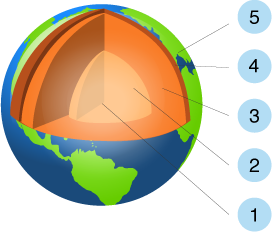
- Fig. 1 The structure of the interior of the Earth
1: inner core 2: outer core 3: lower mantle 4: upper mantle 5: crust 6: Earth surface
[Self-gravity]
The matter with mass has a property to attract each other. It is caused by gravitational force. Small particles suspending in the space has a tendency to attract each other into a large ball by the gravitation force. It is the reason why all stars and planets have a spherical shape. If the shape of planets has angles, they will disappear by the effect of self-gravity and the planet with angles will turn into a spherical planet. We do not consider such a process in this project.
[Orbital motion of the Earth]
The Earth revolves around the Sun with a period of 365 days. The celestial bodies spinning around the Sun is called planet. There are 8 planets in the Solar system. The period of rotation depends on the distance from the Sun. Mercury which is located nearest from the Sun rotates around the Sun with a period of 88 days, while Neptune which is located the most distant from the Sun rotates with a period of 165 days.
[Rotation of the Earth about its own axis]
Day and night are created by the rotation of the Earth about its own axis that connects the north and south poles. The period of the rotation is 24 hours.
[Composition of the atmosphere]
The Earth is covered by the air which is a mixture of various gases such as nitrogen (approx. 80%) and oxygen (approx. 20%). Carbon dioxide occupies only 0.04%. Oxygen is indispensable for keeping our life. We take it into our body by respiration

